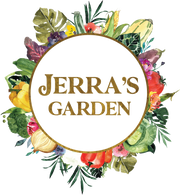Hurry, only 24 items left in stock!
Heirloom Glass Gem Corn Seeds – Rainbow Kernels For Popcorn, Corn Flour, Or Decor
Zea mays
Listing is for 1 packet of minimum 30 seeds
Glass Gem corn is one of the most breathtaking and unique heirloom corn varieties you can grow. Each ear is a natural work of art, featuring translucent kernels in dazzling colors—pinks, purples, blues, oranges, and greens—that truly resemble glass beads. This variety was developed by Carl Barnes, a Cherokee farmer who carefully saved and crossed colorful native corns to preserve their beauty and history. Not only is Glass Gem stunning, but it’s also incredibly versatile. While it’s not sweet corn, the dried kernels can be used for popcorn, ground into cornmeal, or displayed decoratively.
These plants grow tall and strong, producing 3–8 inch ears with high variability in color from plant to plant—making every harvest a beautiful surprise. In the garden, Glass Gem grows best in full sun and fertile, well-drained soil. For the most vibrant colors, allow the ears to dry fully on the stalk before harvesting. Whether you're growing it for food, craft projects, seed saving, or simply to admire, Glass Gem corn is a showstopper with deep cultural roots and a legacy worth preserving.
My top 3 tips for successfully growing corn - or go visit my YouTube channel Jerra's Garden to watch my How to Grow Corn video: https://youtu.be/XhrJQ09dajQ
1. Corn must be grown in a decent size block in order to properly pollinate and produce full ears of corn. Corn is wind pollinated. The tassels that form at the top release pollen in the air that floats down and lands on the silks. Every silk is attached to a single kernel on the cob of corn. If the silk doesn't get pollinated, the kernel will not grow resulting in cobs of corn with gaps in it. Do not grow just a few plants. Ideally you would want a 8ft x 4ft growing area, with at least 4 rows. I sow/plant the corn 8-10 inches apart.
2. The corn ear worms will come so be ready. These are small brown worms that bore into the stalk and ultimately into the forming cobs of corn. They will ruin the entire cob. What makes it so difficult, is that once they bore into the stalk/cob, its hard to treat for the worms. I highly recommend the use of spinosad. BT will also work ok, but its not as effective as spinosad against this particular type of worm. Spinosad is slightly stronger and has the added benefit of killing the worm on contact (BT does not). I spray at the first signs of worm chewing damage on the leaves to reduce the population before they work their way into the stalks/cobs. FYI this maize didn't get infested by worms as much as when I grow sweet corn.
3. Corn is a grass relative. They need high amounts of nitrogen fertilizer to grow strong, lush, green stalks which in turn produce bigger and fuller cobs of corn. Look for fertilizers that are high in nitrogen, at least 10% by weight or more. Apply small amounts of fertilizer every 3 weeks to keep a consistent supply of nitrogen for the plants.
4. Corn loves water. The plants will dry and brown up if the soil is too dry just like grass. Make sure moisture levels stay consistent.
5. If you plan to save your own seed, please note that corn very easily cross pollinates with other corn varieties. Plant each variety at minimum 150FT apart to avoid cross pollination.
Follow me on social media for more gardening and growing tips. IG, YT, and TikTok: jerrasgarden.
PLANTING
Germination: 7-14 days
Seed Sowing Depth: 1-2 inches deep
Sowing: Everyone recommends to direct sow corn as soon as soil temperatures reach over 85F. For some reason I have terrible germination when I direct sow corn. I believe my soil is just too moist since I am in Florida, which rots out the seeds. Because of this, I sow the seeds in 72-cell seed trays, 1 seed per cell, and transplant at the 3 week mark. It works perfectly every time. It is important to transplant no later than the 3 week mark or they get root bound which stunts their growth.
Days to maturity: 110














